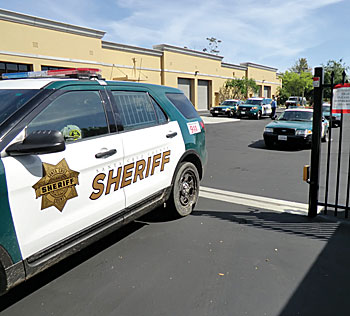By Zach Friend, Supervisor, Second District
Editor’s note: Santa Cruz County Sheriff Jim Hart says, “Good policy drives good law enforcement.” In Santa Cruz County, the four cities and the county all have policies that shooting from a moving vehicle and chokeholds and require officers to use de-escalation and intervene if they see the use of excessive force.
•••
The Criminal Justice Council of Santa Cruz County recently released its first report — an analysis of local police agency policies and procedures — in particular around use of force.
This regional transparent analysis is believed to be the first such comparative regional look into these policies in the nation.
Here is an overview:
What is the Criminal Justice Council?
The CJC was created over 30 years ago in an effort to provide increased coordination and cooperation between criminal justice partners — government, non-profit, educational and others — to reduce youth involvement in gangs.
For example, the CJC has held a conference on the role of women and girls in gangs, which afforded criminal justice and community service providers an opportunity to hear from experts on the role of women and girls in gangs as well as a panel of young women with lived experience in gangs.
The CJC also has worked with school districts, nonprofits and others on intervention and prevention programs to reduce youth involvement in gangs. From supporting educational efforts, nonprofit sporting leagues, conferences that provide viewpoints from those with lived experience and more. The CJC does these events with volunteers and small contributions from the member agencies.
Who is on the CJC?
Local police chiefs, the County Sheriff, the Chief Probation Officer, District Attorney, leadership of two local nonprofits, two local judges, the public defender, the County Superintendent of Schools, the president of Cabrillo College, two County supervisors, elected representatives from the local cities and more participate.
It’s a diverse group that, having participation from local education and nonprofit social program providers, helps create discussions beyond back-end suppression activity toward front-end prevention opportunities. I serve as Chair of the CJC and other members of the executive board include the County Superintendent of Schools, the District Attorney, leadership from the courts, a member of the Scotts Valley City Council and the Watsonville Police Chief.
What did the CJC focus on this year?
This year, the CJC decided to focus our efforts on law enforcement policies and procedures — in particular around use-of-force, privacy (technology), information release, independent oversight and a small look on behavioral health response (next year the focus will be exclusively on behavioral health and the criminal justice system). The purpose is to see where there is alignment, where there are gaps and where there are opportunities to improve.
While it was not a comprehensive look at local agency policies it was an in-depth look at specific elements — and provides a transparent overview of the policies that work to ensure officers respond safely and responsibly in key situations.
As we noted in the report, while the purpose was to evaluate alignment of policies, the goal is not to necessarily have a standardized set of policies across jurisdictions. Local agencies and the communities they serve may have reasons why they have specific policies, don’t have specific policies or have policies that differ from other agencies within the county.
This analysis is to provide a transparent look at those policies and provide a starting point for evaluation by local law enforcement, elected leaders and the communities they serve.
The CJC created an ad hoc committee to work on the analysis and partnered with Applied Survey Research to produce the report. All local law enforcement agencies – Capitola, Scotts Valley, Santa Cruz, Watsonville and the Sheriff’s Office — participated voluntarily, openly, and transparently to provide the policies and answer any questions.
What Were the Key Findings?
One is that there is widespread policy alignment between law enforcement jurisdictions in Santa Cruz County.
For example, on nearly every policy issue regarding use of force, technological deployment and release of information to the public, local law enforcement agencies had updated and modern policies. Some agencies are looking to update or add policies as a result of this review and all are planning to work with their respective elected city councils or the Board of Supervisors on looking at the findings and seeing if adjustments are needed.
While not all jurisdictions have a dedicated unit with sworn officers responding to behavioral/mental health calls, all of the agencies are supportive of the creation of an independent agency that would aid in response to these calls.
Another key finding: All local agencies require de-escalation, ban chokeholds, neck restraints and similar methods, require less lethal force before deadly force when reasonable to do so, have polices that require release of body-worn footage and more.
How Can You Learn More?
The CJC meets quarterly and these meetings are open to the public. Over the last year (and into the foreseeable future) these meetings have been virtual. Information (including the 2021 report and policies that informed the report) can be found at santacruzcjc.org. For the last few years I’ve served as chair and would be happy to provide additional information if you have questions.
If you have any questions about the CJC, or any other matters in our district, please don’t hesitate to call me at 454-2200. I’m maintaining regular updates on social media as well at www.facebook.com/supervisorfriend.
•••
To view the 5-page report, visit https://tinyurl.com/CJC-2021-Final

